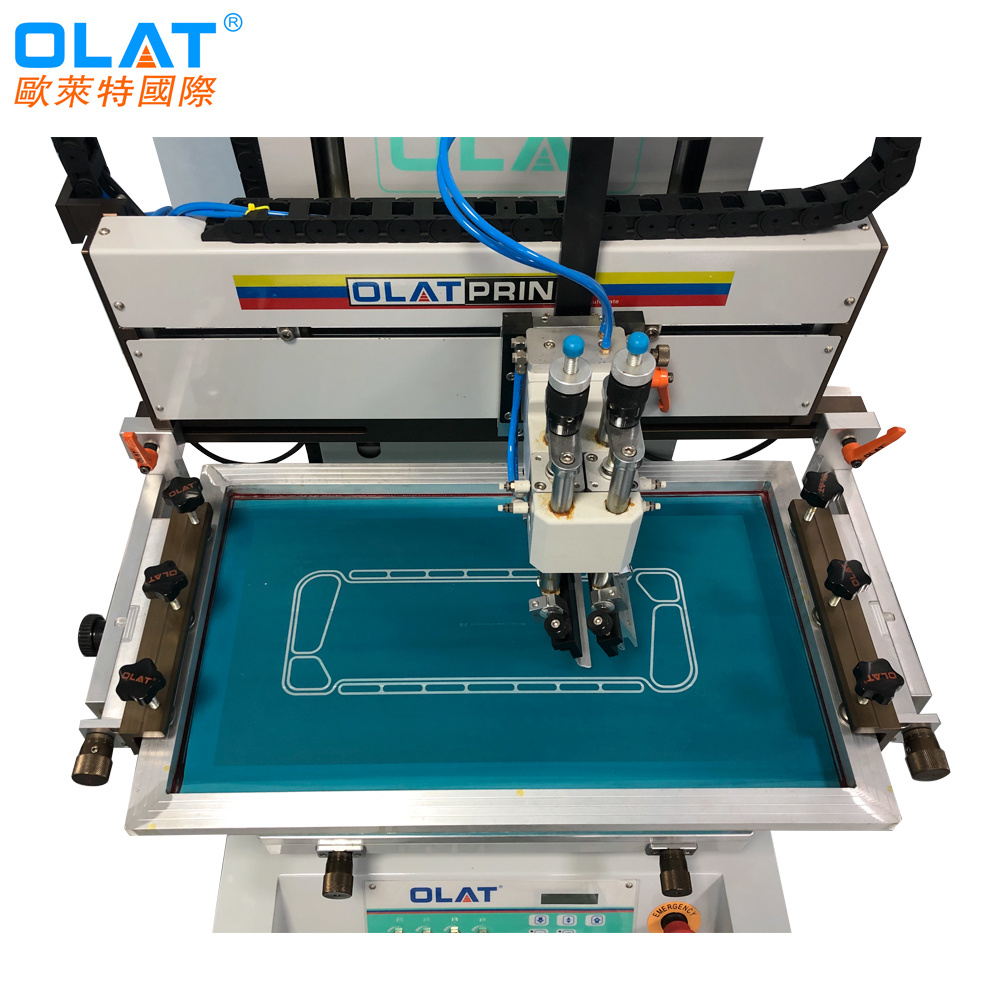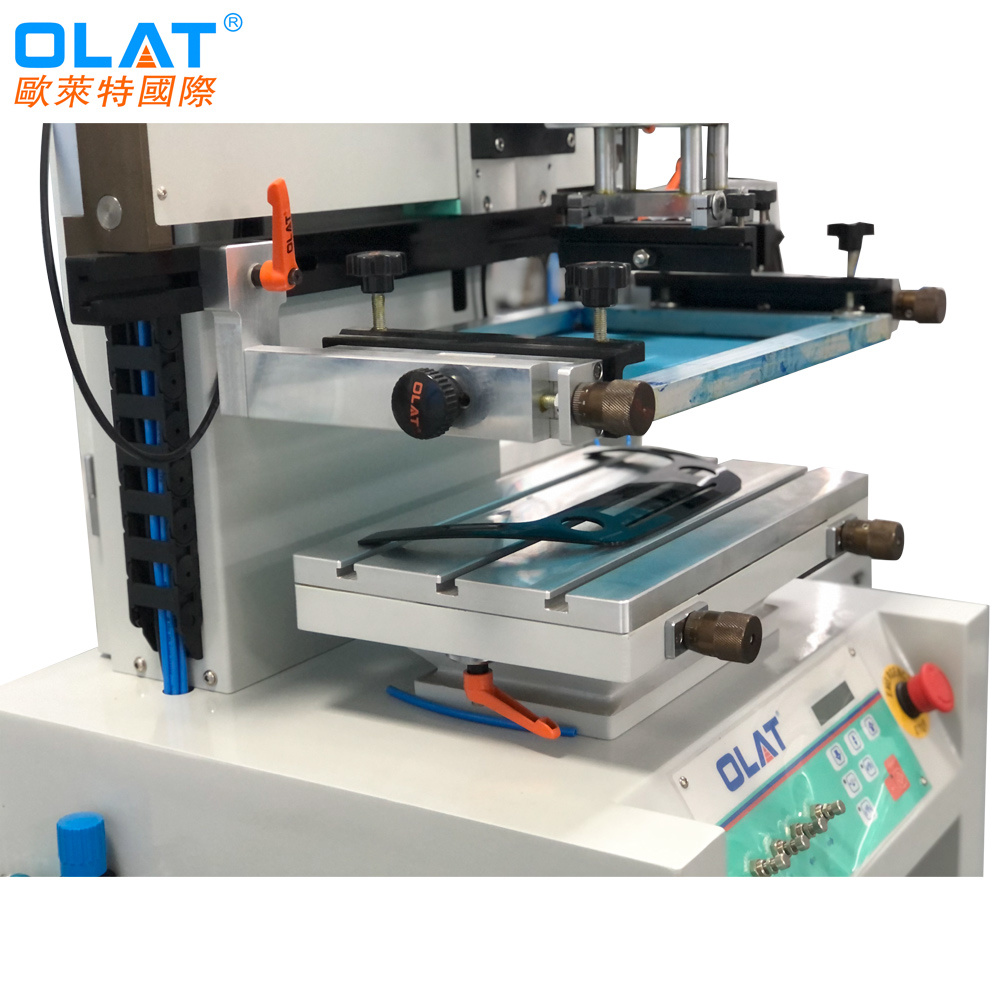

2. Curved screen printing machine refers to a screen printing machine that uses a flat screen plate to print on a circular substrate (plastic containers such as cylindrical, elliptical, spherical, and conical surfaces, glassware, and metal cans, etc.). In the curved screen printing machine, the screen plate is flat and moves in the horizontal direction, the squeegee is fixed on the printing plate, the substrate and the screen plate move synchronously for printing, and the substrate rotates with the linear speed of the printing plate. 3. Electrostatic screen printing machine refers to a screen printing machine that uses a stainless steel screen plate with good conductivity, and the electrostatic force between the positive and negative electrode plates drives the powder to pass through the through hole of the printing plate and attach it to the surface of the substrate. Use a conductive wire mesh as a printing plate, which is connected to the positive pole of the high-voltage power supply; the negative pole is a metal plate parallel to the printing plate; the substrate is between the two levels. During printing, the toner on the printing plate has a positive charge when it passes through the mesh, and is attracted by the negative charge, scattered on the printing surface, and then fixed by heating and other methods to form an imprint. This finding is mainly used for printing on high temperature substrates, such as baked steel plates.


